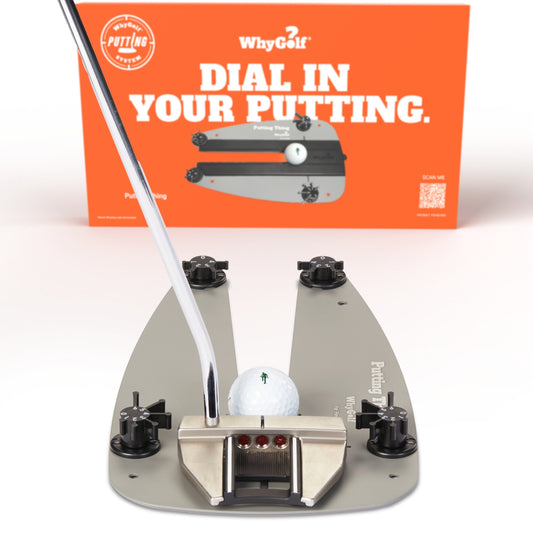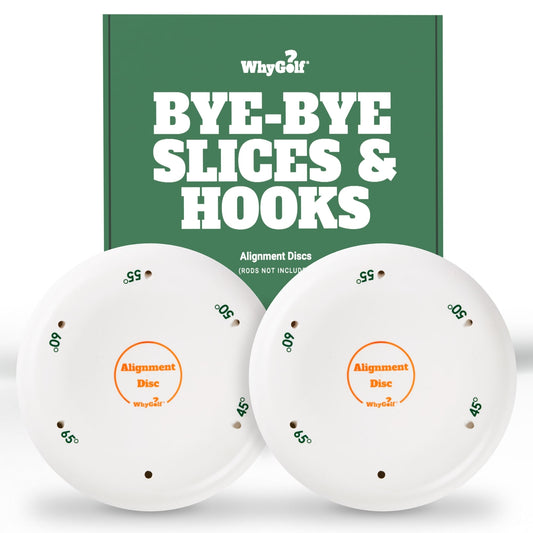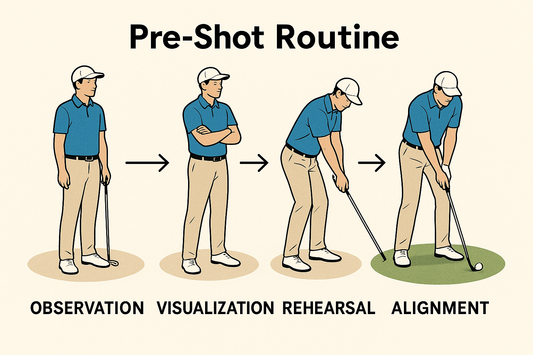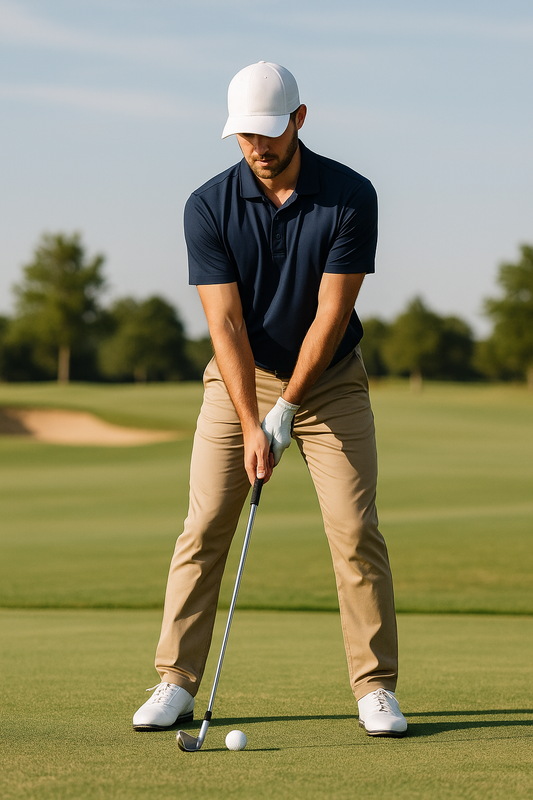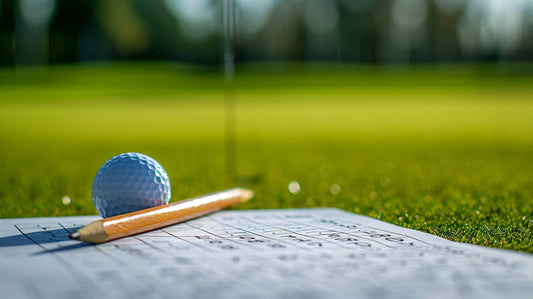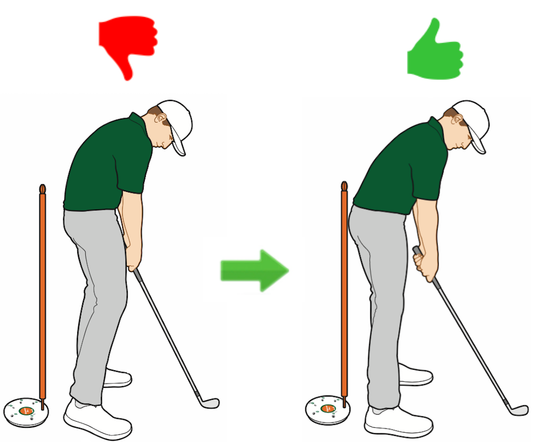Author: WhyGolf WhysGuy
We want to preface this guide with the acknowledgment that neither WhysGuy nor anyone from the WhyGolf team claims to know everything about the golf swing. We don’t want anyone to treat what we say here as gospel. While much of what we’ll say is a reflection of decades of dialogue with PGA instructors and players, we’re always learning and we understand that knowledge about the sport of golf will continue to evolve over time.
In this post, WhysGuy will discuss:
- The three types of golf grips and the pros and cons of each.
- Why a weak grip is one of the biggest reasons most golfers hit a slice.
- How to grip the club properly to become a more consistent ball striker.
Strong Grip vs. Weak Grip - What's Better?
Let's settle the debate: is a strong or weak grip better in golf? Which grip type enhances your game, enabling longer or straighter shots?
The grip is pivotal in golf, as it's the sole point of contact between your body and the club, and consequently, the clubface.
Discussing grip might not seem glamorous, but its consistency is crucial for playing good golf over time. Even top players emphasize the significance of a proper grip. With the importance of grip established, let's explore whether a strong or weak grip is more beneficial for your golf swing.
What is a Strong Grip?
A strong grip in golf will typically help you keep the clubface square or closed to the target through the impact zone.
A strong grip is when the V’s formed by your thumb and index finger point toward the right of your head (assuming you’re a right-handed golfer).
In this grip position, your left hand is more “over” the grip, while your right hand is more under the grip. You’ll be able to see more of the knuckles on your left hand than you can with a weak grip. While your right hand is facing toward the target or even slightly left of it.
Benefits of a Strong Grip
- A strong grip will generally allow you to square the clubface at impact, as opposed to leaving the clubface open and hitting the block. A strong grip can make it easier to hit a draw, shallow the club, and swing from the inside - which can lead to more power and distance with every club in the bag.
- Some of the most successful players to have a strong grip include Dustin Johnson, Bubba Watson, Fred Couples, and more.
- Those who opt for a stronger grip will often experience a lower ball flight. Since the club is more compressed at address, it can create a more penetrating trajectory.
Negatives of a Strong Grip
- A strong grip may require making adjustments in your swing mechanics to accommodate a more closed clubface angle at impact.
- Since a strong grip generally facilitates a closed clubface in the downswing, it's important to make sure your lower body clears the impact area well before you make contact with the golf ball.
What is a Weak Grip?
In a weak grip, the V's formed by the thumb and index finger point towards the left side of your head for right-handed golfers. This position places the left hand more underneath the club, showing fewer knuckles at the address position. Conversely, the right hand is positioned more over the grip, facing towards the right of the target.
Benefits of a Weak Grip
- The biggest advantage of a weak grip is that it can make it easier to hit a fade. Since the clubface is likely to be more open on the downswing, you'll be less likely to start the ball left of your target and hit the hook.
- Additionally, those who use a weak grip around the greens will often find that it's easier to release the clubhead through the impact area - as opposed to dragging the handle and delofting your wedge. Thus, a weaker grip can help you use the bounce of your wedge more effectively.
Negatives of a Weak Grip
- Like a strong grip, you’ll likely need to make adjustments in your swing to accommodate for an open face at impact. This might include changing your ball position and alignment to make sure you can get your ball to left of the target.
- Many great players today (e.g., Jon Rahm) employ a weak grip, but compensate with a bowed lead wrist position. This obviously works for him but most golfers don't have the wrist flexibility to accommodate such a position. It's important to fully understand your physical capabilities when considering adopting a weak grip.
What is a Neutral Grip?
The third grip style is the neutral grip, often considered the best of both worlds. It combines the power of a strong grip with the control of a weaker one.
To achieve a neutral grip, align the V's formed between your thumb and index finger directly towards your head. A prime example of this grip is Tiger Woods, known for interlocking his fingers.
Ultimately, a neutral grip offers the most versatility in shot-making.
Bonus: Don't Forget About Grip Pressure
While the position of your hands—whether weak, neutral, or strong—is important, your grip pressure on the club is equally critical.
Gripping the club too tightly, particularly with the putter, can cause excessive tension, hindering natural wrist movement. Excess pressure may also impede the use of larger muscles needed for a smooth, powerful swing.
Conversely, a grip that is too loose can lead to problems like increased club movement during the swing. Additionally, a loose grip increases the likelihood of the club slipping or twisting in your hands, which can adversely affect your accuracy.
As you refine your grip position, experiment with different levels of grip pressure. Once you discover the right pressure level, aim to maintain it consistently throughout your swing.
Strong Grip vs Weak Grip in Golf - Key Takeaways:
- Great golf can be played from a strong or weak grip position - just stick to whichever feels more natural to you and make sure you keep it consistent when you play!
- If you suffer from a pull-hook, consider weakening your grip slightly so you can square up the clubface.
- Make sure to maintain the same grip pressure throughout your golf swing.
Ready to make an investment in your golf swing? Explore our full suite of golf training aids here.
How do I know whether I have a strong grip vs. weak grip?
In golf, identifying whether you have a strong grip or a weak grip is key to understanding your swing dynamics. A strong grip is when your lead hand (left hand for a right-handed golfer) is rotated more towards your trailing side, often revealing three or more knuckles when looking down at your grip. This grip tends to close the clubface at impact, useful for players who slice the ball but can lead to hooks if overdone.
Conversely, a weak grip features the lead hand rotated more towards the target, usually showing fewer knuckles, perhaps one or none. This grip typically opens the clubface at impact, which can help if you tend to hook the ball, but it might cause slicing issues.
What are the benefits of a strong grip?
A strong grip in golf, where the lead hand shows more knuckles and is rotated towards the trailing side, offers several benefits. It naturally closes the clubface at impact, reducing the tendency to slice the ball. This grip can increase power and promote a draw ball flight, which typically results in more distance. It also provides better wrist flexibility and leverage, enhancing the ability to generate clubhead speed. Ideal for players with a natural fade or slice, a strong grip can improve shot accuracy and overall consistency in their game.
What are the drawbacks of a strong grip?
A strong grip in golf, characterized by showing more knuckles on the lead hand, can have drawbacks. It may lead to an overly closed clubface at impact, increasing the risk of hooking the ball. This grip can also limit the ability to make fine adjustments during the swing, potentially resulting in less shot versatility. Golfers with a strong grip might struggle with consistency, especially under pressure or in varied playing conditions. It can also encourage a more aggressive wrist action, which, if not controlled properly, may affect accuracy and shot placement. Thus, while beneficial for some, a strong grip requires careful management to avoid these potential pitfalls.
What are the benefits of a weak grip?
A weak grip in golf, where the lead hand shows fewer knuckles, offers benefits like promoting a more open clubface at impact, which can help players prone to hooking the ball. It typically encourages a fade ball flight, preferred by many for its control and consistency. This grip can improve alignment and accuracy, as it aligns the hands more closely with the clubface direction. It also suits golfers with a naturally strong wrist action, helping to temper excessive movement and providing better shot precision. Overall, a weak grip can be advantageous for fine-tuning ball flight and achieving more consistent, controlled shots.
What are the drawbacks of a weak grip?
The drawbacks of a weak grip in golf, where the lead hand shows fewer knuckles, include a tendency to open the clubface at impact. This can lead to slicing the ball, especially for those who struggle with an outside-to-inside swing path. It may also reduce wrist flexibility and leverage, potentially decreasing power and shot distance. Golfers with a weak grip might find it challenging to generate optimal clubhead speed, impacting overall performance. Additionally, this grip can make it harder to achieve a draw ball flight, which is often desired for its distance and roll benefits. Thus, while useful for some, a weak grip requires careful management to mitigate these potential issues.
Is a strong or weak grip better?
Determining whether a strong or weak grip is better in golf depends on individual playing style and needs. A strong grip can help reduce slicing, increase shot power, and promote a draw ball flight, benefiting players with a natural fade. However, it can lead to hooking and might reduce shot versatility. On the other hand, a weak grip aids in controlling hooking, encourages a fade ball flight, and can improve shot precision, ideal for players with a natural draw or strong wrist action. The choice between a strong or weak grip should be based on personal comfort, swing tendencies, and desired ball flight characteristics. Ultimately, neither grip is inherently better; it's about what works best for the individual golfer.
Which type of grip do most pros play with?
Touring professionals use a variety of grip types, tailored to their individual playing styles and preferences. Many opt for a neutral to slightly strong grip, balancing control and power. This allows for a consistent ball flight and adaptability to different shots. Some players, especially those who favor a draw, might prefer a stronger grip. Conversely, players who naturally play a fade or seek more precision might lean towards a weaker grip. The key is customization: professionals fine-tune their grips based on swing mechanics, comfort, and the specific demands of their game. There's no one-size-fits-all approach among touring pros, reflecting the diversity and personalization in professional golf.
Check Out Our YouTube Channel For Drills and Tips



